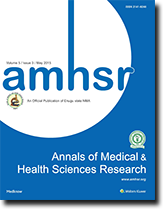

Background: Breast cancer is a major source of public health concern. Our work aims to study the role of oxidative stress in breast pathophysiology. Materials & Methods: A group of 39 patients diagnosed and treated for breast cancer was followed in a prospective, observational, nonrandomized study to assess the serum oxidative stress levels. Thus, the following parameters were determined: Malondialdehyde (MDA) concentration as a measure of lipid peroxidation reaction, serum thiol concentration as end products of oxidative degradation of proteins, and total level of antioxidants. Results: 81.9% of these patients have an excess of adipose tissue (overweight or obesity). A positive correlation was obtained between the serum peroxides values and obesity as measured by Body Mass Index (BMI) (p<0.01) and waist circumference (p<0.05). The mean values of serum thiols were higher in obese patients versus non-obese ones (341 μmol/l vs. 336 μmol/l), but without statistical significance. Regarding the influence of obesity on antioxidants levels, no statistically significant results were obtained. Conclusion: Breast cancer patients had significantly high levels of oxidation markers such as MDA and low levels of antioxidant markers, respectively thiols and total antioxidants. The obtained oxidative stress parameters are independent of obesity and are mainly related to the presence of breast cancer.
Select your language of interest to view the total content in your interested language
Annals of Medical and Health Sciences Research received 24805 citations as per google scholar report
 The Annals of Medical and Health Sciences Research is a monthly multidisciplinary medical journal.
The Annals of Medical and Health Sciences Research is a monthly multidisciplinary medical journal.